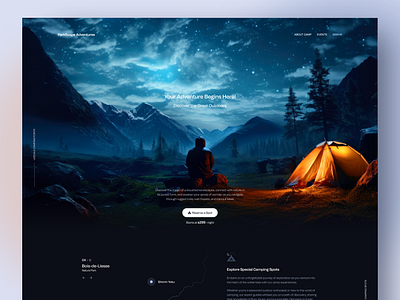Discover Web Design Las Vegas for Modern Websites
Discover Web Design Las Vegas for Modern Websites
Blog Article
Imaginative Web Design Solutions for Modern and Engaging Sites
In the realm of web style, the pursuit of modern and engaging services has actually ended up being progressively essential for organizations intending to catch customer focus. By incorporating strong shade systems, interactive aspects, and receptive formats, developers can create experiences that not only reverberate with individuals but additionally improve brand identity.
Welcoming Bold Color Design
In website design, the calculated use bold color schemes can significantly improve user involvement and brand name identity. By employing lively hues, developers can develop visually striking sites that capture attention and foster a remarkable experience. A well-chosen color palette not just shows a company's worths yet likewise stimulates details emotions that can influence individual behavior.
Vibrant colors can be utilized to guide individuals' focus to key components such as phone call to activity, boosting conversion prices. As an example, making use of contrasting colors for switches and web links can make these elements stand out, triggering customers to connect quicker. A natural shade scheme throughout the site reinforces brand recognition, producing a feeling of knowledge and depend on amongst site visitors.
Nonetheless, it is essential to stabilize vibrant shades with adequate white area to prevent overwhelming users. Effective use of typography likewise matches strong shades, guaranteeing readability while keeping visual appeal. Eventually, accepting bold shade schemes in internet style not only elevates aesthetic high quality but additionally plays an integral function in achieving tactical company purposes, making it an important consideration for contemporary internet development.

Making Use Of Interactive Elements
Interactive aspects are necessary in modern web design, as they significantly improve individual involvement and create an extra dynamic searching experience. By incorporating attributes such as animations, hover results, and clickable components, web sites can encourage users to discover web content better and return for future check outs.

Micro-interactions, such as subtle computer animations when a button is clicked or a kind is submitted, can likewise improve the individual experience by giving prompt comments. These small information can make the website feel more responsive and alive, cultivating a sense of connection between individuals and the site.
In addition, gamification aspects, such as benefits for finishing particular activities, can encourage users to engage with the material much more deeply. By thoughtfully integrating these interactive elements, web developers can create a remarkable and interesting on-line experience that resonates with individuals and motivates them to return.
Implementing Receptive Layout
Applying receptive layout is critical in today's multi-device landscape, ensuring that websites supply an optimum viewing experience throughout different display dimensions. As users significantly access the web via mobile phones, tablet computers, and desktop computers, a one-size-fits-all strategy is no more viable. Responsive style enables smooth navigating and communication, adapting design and web content to fit the tool being made use of.
Trick concepts of receptive layout consist of fluid grids, flexible photos, and media questions. Liquid grids use relative devices, such as portions, instead of dealt with pixels, enabling aspects to resize proportionately. Versatile images scale within their having components, avoiding overflow and maintaining aesthetic honesty. Media questions promote the application of different designs based upon the tool's attributes, such as width, elevation, or resolution, allowing developers to customize the individual experience effectively.
In addition, responsive layout enhances SEO efficiency, as online search engine favor mobile-friendly websites. By implementing receptive design, companies not just improve user contentment and engagement but also increase their reach in a competitive digital landscape. As modern technology remains to evolve, embracing receptive style has become a fundamental practice for any type of contemporary and appealing web site.
Integrating Multimedia Content
Multimedia content plays a crucial duty in creating engaging and dynamic internet experiences that record users' interest and enhance understanding. By incorporating text, photos, sound, and find here video, sites can provide a richer story that attract different discovering designs and preferences. This integration not only reinforces individual engagement but also aids in communicating intricate concepts succinctly.
Incorporating premium pictures and infographics can damage up textual material, making it much more absorbable. In a similar way, video tutorials and discussions can give extensive insights that static material may not fully communicate. Audio aspects, such as podcasts or history songs, can likewise boost the environment of an internet site, producing an extra immersive helpful resources experience.
Additionally, the tactical usage of multimedia can improve search engine optimization performance, as search engines favor diverse web content types, raising exposure. It is crucial to make sure that multimedia components do not prevent page lots times, as this can lead to user disappointment. By stabilizing multimedia assimilation with efficiency factors to consider, internet developers can develop aesthetically appealing and functional internet sites that resonate with individuals, cultivating a deeper link and encouraging return visits.
Focusing On Individual Experience

To achieve an ideal user experience, designers should concentrate on numerous essential concepts. Initially, receptive layout is essential; internet sites need to adapt flawlessly to different devices and screen sizes. This access makes sure that customers can engage with content no matter their chosen system. Second of all, clarity in layout and pecking order is vital. Clear contact us to activity, readable typography, and arranged content overview individuals, minimizing cognitive load.
Additionally, integrating user feedback into the design procedure is invaluable. Normal testing with real users assists identify discomfort factors and locations for improvement, permitting repetitive enhancements. Eventually, focusing on UX not only boosts customer contentment however likewise drives interaction and conversion prices, making it an essential aspect of modern-day website design strategies. By putting individuals at the facility of design initiatives, websites can create long lasting, positive impressions that motivate return visits.
Verdict
In conclusion, modern-day internet style remedies that stress strong shade schemes, interactive components, responsive design, and multimedia material dramatically boost individual involvement and satisfaction. Prioritizing individual experience via clear designs and constant responses even more contributes to boosted conversion rates. By embracing these techniques, websites can effectively mesmerize visitors visit here and enhance brand identification, ultimately resulting in a much more vibrant and appealing on the internet visibility. The assimilation of these style principles is crucial for achieving contemporary website design objectives.
Report this page